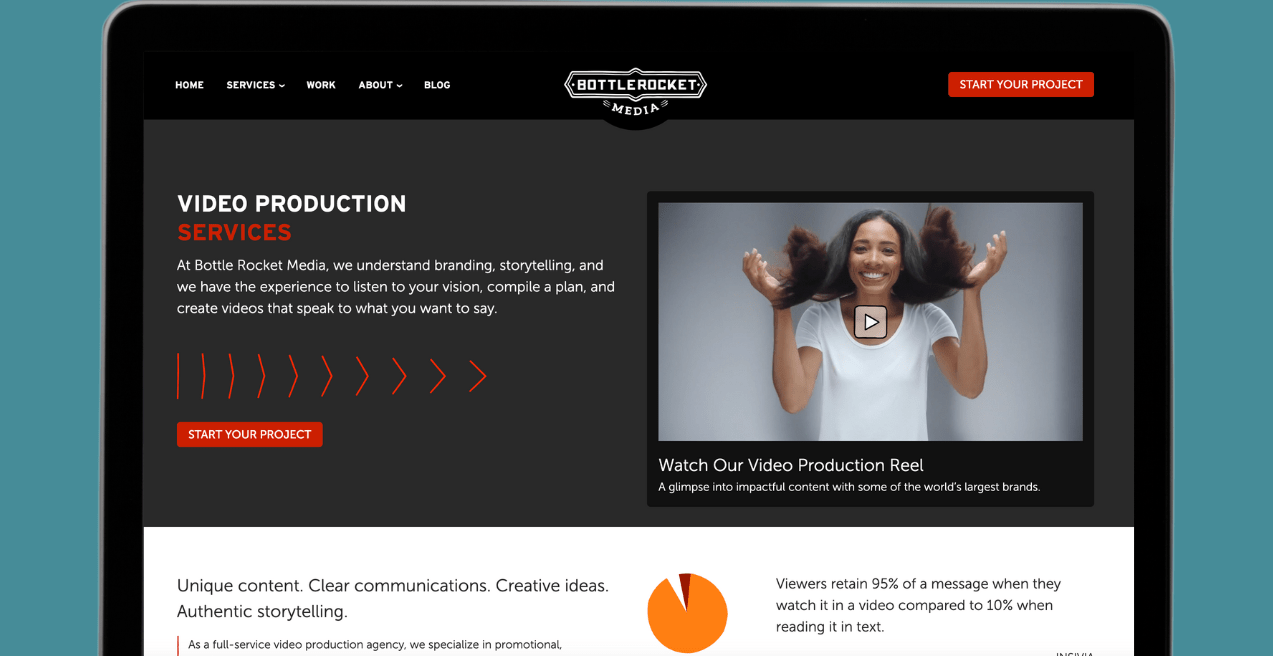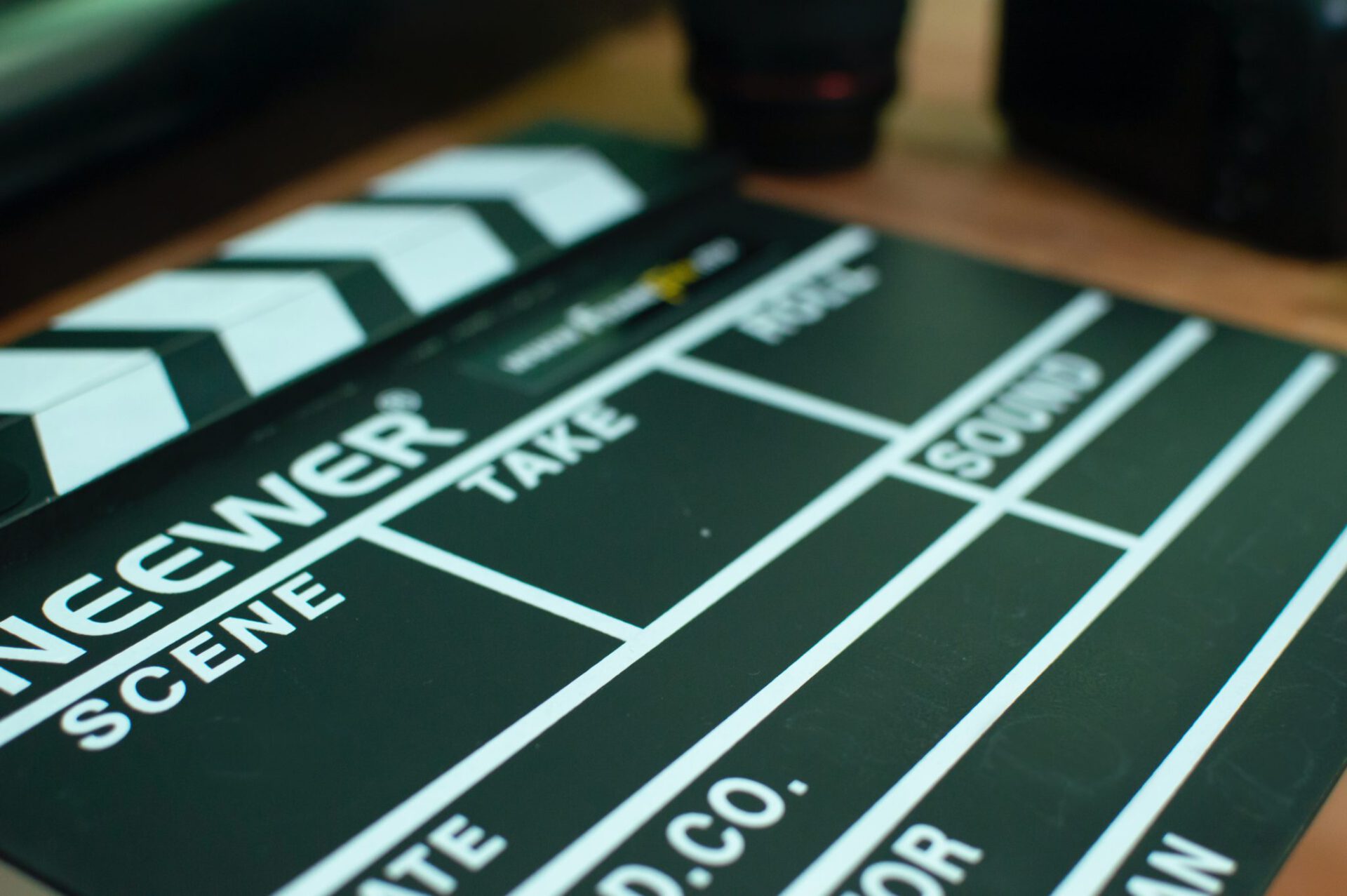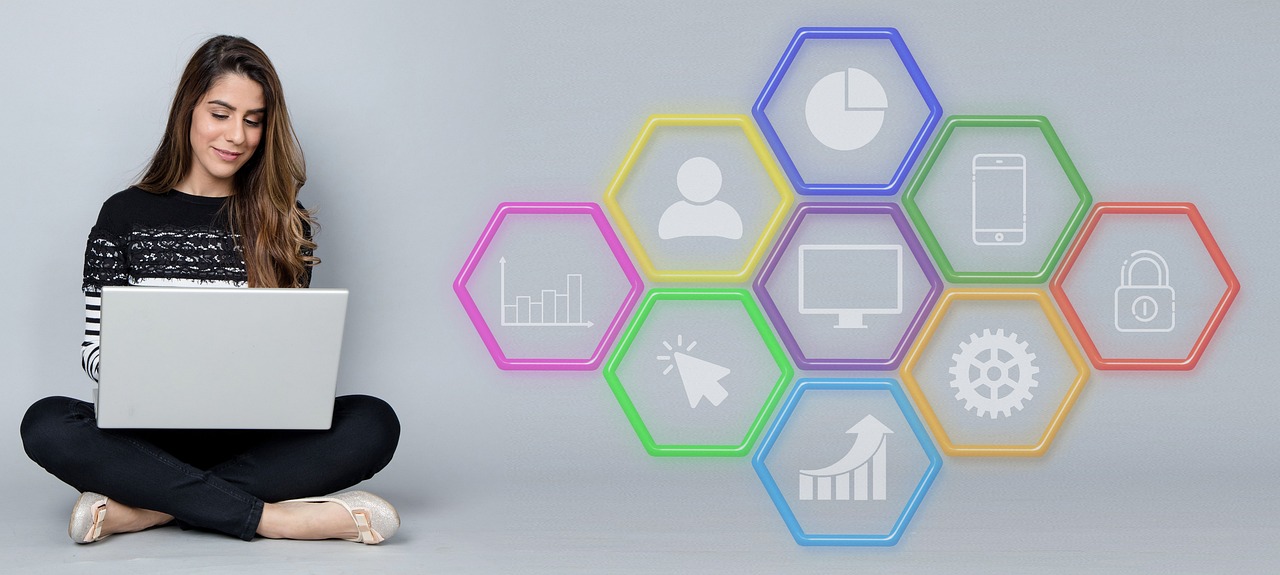How many visitors are clicking on your landing page but not taking action?
Driving traffic to a website is excellent, but what really matters is converting those visits into meaningful action. A well-crafted landing page can turn casual visitors into qualified leads, fueling growth and creating lasting opportunities for your business.
If you’re ready to take your web pages to the next level, this article will give you a dozen actionable techniques to enhance your landing page strategy and drive more conversions. But first…
What is a Landing Page?
How is a landing page different from a home page, a service page, or a product page? The key difference is focus. A landing page is built around a single goal: driving one clear call to action. This call to action could be:
- Signing up for a newsletter
- Downloading an eBook
- Registering for a webinar
- Making a purchase
In just a few seconds, a well-designed landing page should leave a lasting impression and entice people enough to take the desired action.
What’s the Purpose of a High-Conversion Landing Page?
Any brand or business that wants to succeed should have a well-optimized landing page. When done right, it eliminates distractions, builds trust, and makes it easy for people to say “yes.” Landing pages matter for conversions because they:
- Improve ad relevance and Quality Score on platforms like Google Ads
- Provide measurable results through analytics and A/B testing
- Segment traffic based on campaigns or user intent
- Reduce distractions by focusing on one clear action
- Build trust through targeted messaging and social proof
- Increase conversion rates by aligning content with user expectations
- Support personalized offers for different audience segments
- Shorten the decision-making process with concise, benefit-driven content
A well-optimized landing page can significantly improve your ROI for both paid and organic campaigns by turning more clicks into customers. It makes sure every visitor receives a tailored, distraction-free experience that guides them toward a single, measurable action, thereby maximizing the impact of every marketing dollar you spend.
Every high-converting landing page should consider the following twelve points.
1. Have a Clear Value Proposition
Your value proposition is the very core of your landing page. It succinctly communicates to visitors why they should choose your product or service over the competition. An effective high-conversion landing page clearly states the benefits that visitors can expect to receive.
Your landing page needs to demonstrate how your product makes life easier, why you’re the better choice over your competitors, and what benefits customers can expect. To achieve this, keep your message direct, make it compelling, and focus on how your offer addresses a specific problem or fulfills a particular need.
2. Present Engaging and Relevant Headlines
The headline is often the first thing visitors see on your page. To keep their attention, use a bold, action-oriented headline that resonates with your target audience and supports the central theme of the landing page. A strong headline grabs attention and sets the tone for your content.
When designing a landing page that converts, it’s crucial to align your headline perfectly with your value proposition and reinforce your brand’s messaging. Try experimenting with different wordings and tones to find one that inspires immediate interest.
Headline Formulas That Work
- Problem → Outcome: Ideal for showcasing quick solutions to customer pain points. If you’re offering SaaS or software such as automation tools, accounting programs, or project management platforms, your headline should clearly convey how you resolve those challenges.
Example: “Still managing tasks in spreadsheets? Automate 80% of your workflow today.”
- Number + Outcome + Time: Best suited for B2B services such as consulting, marketing, or other professional offerings. Your headlines should emphasize credibility and highlight the tangible results you deliver.
Example: “Customers see 37% more booked demos in 14 days with our service.”
- Before/After/Bridge: Perfect for product launches, transformative offerings, and innovative solutions. Use concrete numbers in your headlines to build trust and set clear expectations.
Example: Before: Disorganized. After: Centralized. Bridge: All-in-one workflow.
- 4U-Useful, Urgent, Unique, Ultra-specific: Make sure your headline hits at least three elements. This works exceptionally well when promoting downloadable resources, webinars, or consultations. For example, an e-commerce headline might read: Triple Your Sales Without Increasing Ad Spend – New AI-Powered Method Revealed (Useful + Unique + Ultra-specific).
Marketing example: Transform Your Website’s ROI in 30 Days – Or You Don’t Pay a Dime. (Useful + Urgent + Ultra-specific).
A conversion-focused landing page requires a strong headline that clearly informs the audience they are in the right place. The key is matching your framework to your audience’s awareness level and solution complexity.
Pro Tip: always draft multiple versions, as your first attempt rarely wins.
3. Incorporate High-Quality Visuals and Multimedia
Visual content can transform your landing page from ordinary to extraordinary. Visual elements significantly boost the likelihood of engagement, making them a key feature of designing a high-conversion landing page.
So, incorporate high-resolution images, explainer videos, data visuals, or infographics that enhance your message and capture your brand essence.
Then, optimize your images and multimedia content for fast loading times, as even the most high-quality visuals can harm conversion rates if they slow down your page. Balancing aesthetics with functionality will create a smooth experience for every visitor.
4. Have a Clean and Focused Design
A cluttered landing page can overwhelm and distract your audience from the primary call-to-action (CTA). When creating high-converting landing pages, it’s essential to maintain a clear and focused layout. Utilize white space, coherent typography, and a color scheme that aligns with your brand identity.
Simplify your design to guide people naturally to the CTA without unnecessary distractions. A minimalist design facilitates faster load times and creates a professional look that builds trust with your audience.
This is not the place for endless links or “explore more” detours; keep your audience here, keep them engaged, and make the path to action simple.
5. Display an Optimized Call-to-Action (CTA)
The CTA is the heartbeat of a landing page designed for conversion, so make sure it stands out. Use contrasting colors, persuasive text, and instead of a generic “Submit” or “Click Here,” try action-driven verbiage like “Get Started Now” or “Claim Your Free Trial.”
Pair your CTA with a sense of urgency, whether through limited-time offers or exclusive benefits, to emphasize that delaying action could mean missing out on a great opportunity. Continually test different placements and button designs to find the most effective combination for your landing page.
Here are some great examples of CTA frameworks:
- PAS: Problem → Agitate → Solution: Identify a pain point your audience has, then intensify their awareness of that problem’s impact, before presenting your solution as the relief they need. This framework increases conversion rates for audiences already aware of their problem.
Example: “Struggling with low website conversions? (Problem), Every day you wait, you’re losing potential customers to competitors who convert better. (Agitate), Our landing page optimization tool increases conversions by 40% in just 30 days. (Solution).”
PAS works best with B2B companies that have problem-aware audiences and simple products.
- AIDA: Attention → Interest → Desire → Action: This is the classic framework that guides someone on a logical, emotional journey. If you’re looking to build strong brand awareness and longer sales cycles, this is the framework to use for top-of-funnel traffic, complex products, or premium offers.
Example: Start with a compelling headline that stops the scroll (Attention), follow with benefits that relate to their needs (Interest), build excitement about the transformation possible (Desire), then direct them to take the next step (Action). This works particularly well for longer-form landing pages where you have space to develop each stage.
AIDA is most effective for brands with unaware audiences and complex products that require an educational approach.
- BAB: Before → After → Bridge: This is best for coaching, education, life improvement, and luxury brands that want emotional engagement and premium pricing acceptance.
Example: This storytelling approach paints a picture of the customer’s current frustrating state (Before), shows them an aspirational future state (After), then positions your product as the bridge between the two. It’s especially effective for transformation-focused products, such as fitness programs, business tools, or educational courses.
BAB works best with brands with solution-aware but unmotivated audiences, who sell higher-priced items, as they often perform better with BAB’s transformation focus.
While you may be tempted to blend these approaches, doing so often creates confusing and inconsistent messaging that dilutes your impact. Therefore, take heed of the best practices and optimal use of these various CTA formulas.
6. Offer Credibility With Trust Signals
When visitors feel uncertain about a product or service, social proof can be the deciding factor that turns hesitation into action. Be sure to integrate testimonials, customer reviews, or logos of well-known clients and partners on the page. This builds credibility and reassures visitors that they are making a wise decision by engaging with your brand.
Alongside social proof, consider adding security badges, privacy guarantees, and any certifications that prove your site’s trustworthiness. When crafting a lead-gen landing page, trust is as crucial as the design itself.
7. Craft Strategic Lead Capture Forms
Lead capture forms are another cornerstone in creating high-converting landing pages. They should be simple, easy to fill out, and directly related to the benefit being offered. Ask for minimal information to reduce friction, and clearly explain why you need the information you’re requesting.
Make sure to focus on the benefits, not the features. Instead of saying “Our software has AI integration,” say “Save hours of manual work with smart automation.”
Use a two-step form process where initial details are collected first, followed by additional questions once the visitor has shown a higher level of interest. The objective is to lower the barrier to conversion without sacrificing valuable leads.
Use Psychological Triggers Ethically
When creating high-converting landing pages, several psychological triggers can be employed to boost engagement ethically. Instead of using vague terms, be specific with numbers (like “save 6+ hours weekly”). Show clear before/after comparisons to highlight the transformation, and emphasize what people might lose by not taking action.
Start with small commitments (like a quick quiz) before asking for bigger ones (like a trial signup). If you have genuine limited-time offers or limited spots, make that clear. Finally, remove any hesitation by offering guarantees like 30-day refunds, easy cancellations, or no-credit-card-needed trials. These simple techniques can make your marketing more effective while staying honest with your audience.
8. Deliver Mobile Responsiveness
With more people browsing on their phones, your landing page must look and function well on any screen. A mobile-responsive design adapts everything, from your layout and call-to-action buttons to images and text, ensuring a seamless experience across all devices. This makes it easy to use and visually appealing, regardless of the device someone’s using.
When fine-tuning for mobile, make sure your page loads quickly and that buttons are large enough to tap without difficulty. Mobile users typically comprise a significant portion of your audience, so adopting a mobile-first mindset can significantly boost your conversion rates.
Don’t forget about that crucial “above the fold” area. This is what people see before they scroll down. It is all about showing important information right away, with no need for scrolling. The hero section, that big eye-catching area at the top of a webpage, usually grabs this prime spot. Basically, the hero section nails the above-the-fold idea.
On mobile, this space is tiny, so every single pixel counts. Your content up there needs to hit hard and answer the big questions right away: What’s this about? Is it for me? Why should I take action now?
Once you’ve included that content, test your landing page on multiple devices so that all major elements remain clear and compelling across all screen sizes.
9. Complete A/B Testing for Continuous Improvement
Even the best-designed landing pages can continually be refined. This is why A/B testing is essential in understanding what resonates with your audience. Test various elements, such as headlines, CTA button placements, images, and color schemes, to determine which combination yields the highest conversion rate.
Use analytics and tracking tools to monitor user behavior and make data-driven decisions. A thoughtful A/B testing strategy will empower you to continually optimize your landing page, making the learning process an ongoing cycle of improvement.
10. Achieve Fast Load Times and Performance
A slow landing page can be one of the biggest obstacles to conversion. Even if all other components are effectively designed, poor performance can lead to high bounce rates. To avoid this, prioritize optimizing your media files, leveraging browser caching, and minimizing unnecessary plugins and heavy scripts.
Regular performance audits and speed tests will help you stay ahead of any issues that may affect user experience. A high-conversion landing page must strike a balance between visual appeal and technical stability.
11. Implement SEO Best Practices
For your landing page to reach a wider audience, search engine optimization is vital. For example, for a landing page that focuses on converting visitors, you should naturally integrate targeted keywords such as “how to design a landing page that converts” and “creating high-converting landing pages” within your content. Then you would include descriptive meta titles, alt texts for images, and internal linking strategies to enhance visibility.
SEO is about attracting traffic and aligning your content with the search intent of your target audience. A thoughtfully optimized landing page attracts more visitors, enhancing the overall user experience and paving the way for higher conversions.
12. Monitor Analytics and Continuously Improve
The journey to creating high-converting landing pages doesn’t stop once your page is live. Monitor analytics, user behavior, and conversion rates over time. Utilize tools like Google Analytics, heatmaps, or user session recordings to gather insights on how visitors interact with your page.
Pay attention to key metrics, including bounce rate, time on page, and form completion rates. This data will help you identify areas for improvement.
Your responsibility is always to anticipate and respond to the changing marketing trends and consumer expectations. To do so, commit to ongoing testing and adaptation to keep your landing page optimized and competitive.
Advanced Tips for Boosting Conversions
- Use exit-intent popups to capture abandoned visitors
- Implement chatbots for real-time engagement
- Use heatmaps to understand user behavior
- Offer lead magnets like eBooks or checklists
These advanced tactics are most effective when implemented gradually and tested against your baseline performance. Begin by focusing on one or two techniques that align with your audience’s behavior patterns for maximum impact.
Conclusion
Designing a landing page that converts requires a blend of creativity and data-driven strategies that continually evolve. By utilizing these twelve actionable techniques, you’ll have a landing page that attracts visitors and converts them into loyal customers.
Looking for guidance on designing a landing page that converts? You’re in the right place! Increase conversions with Bottle Rocket Media today.





